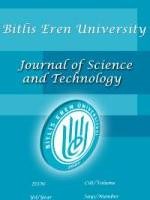Impact on the building performance of subsequently cast concrete
Impact on the building performance of subsequently cast concrete
___
- Aydınoğlu, M. N., 2007. A response spectrum-based nonlinear assessment tool for practice: incremental response spectrum analysis (IRSA), ISET Journal of Earthquake Technology, 44(1), 169-192. DBYBHY., 2007. Deprem Bölgelerinde Yapılacak Binalar Hakkında Yönetmelik. Tc Çevre Ve Şehircilik Bakanlığı, Afet İşleri Genel Müdürlüğü, Deprem Araştırma Dairesi. Doran, B., Akbaş, B., Sayım, İ., Fahjan, Y., and Alacalı, S.,N., 2011. Uzun periyotlu bir yapıda yapısal sağlık izlemesi ve deprem performansının belirlenmesi, 1. Türkiye Deprem Mühendisliği ve Sismoloji Konferansı,Ankara Işık, E., 2016 a. Effects of Material Strength on Structural Performance of Damaged RC Buildings., Bitlis Eren Univ J Sci & Technol 6 (1), 22-25, Estêvão, J. M., and Oliveira, C. S. 2015. A new analysis method for structural failure evaluation. Engineering Failure Analysis, 56, 573-584. Inel, M., and Meral, E. 2016. Seismic performance of RC buildings subjected to past earthquakes in Turkey. Earthquakes and Structures, 11(3), 483-503. Inel, M., Bilgin, H., and Özmen, H. B. 2007. Orta Yükseklikteki Betonarme Binaların Deprem Performanslarının Afet Yönetmeliğine Göre Tayini. Pamukkale Üniversitesi Mühendislik Bilimleri Dergisi, 13(1), 81-89. Işık, E., 2016 b. Consistency of the rapid assessment method for reinforced concrete buildings, EarthquakesandStructures,Vol. 11, No. 5(2016) 873-885, , Krawinkler, H., and Seneviratna, G. D. P. K. 1998. Pros and cons of a pushover analysis of seismic performance evaluation. Engineering structures, 20(4), 452-464. Kutanis, M., and Boru, O.,E., 2014. The need for upgrading the seismic performance objectives, Earthquakes and Structures, 7(4), 401-414. Uğurlu, A., 2013. Depremde beton ve davranışı. İmo Mühendislik Haberleri 476: 58, Ersoy, U.,and Özcebe, G. 2007. Betonarme: temel ilkeler, TS-500-2000 ve Türk deprem yönetmeliğine (1998) göre hesap. Evrim Yayınevi. Computers and Structures, 2011. Sap2000 15.1.0. Berkeley. SeismoStruct v6.5 2013, A computer program for static and dynamic nonlinear analysis of framed structures. Seismosoft
- Yayın Aralığı: Yılda 2 Sayı
- Başlangıç: 2011
- Yayıncı: Bitlis Eren Üniversitesi
Modelling temperature measurement data by using copula functions
Erkan TAŞTAN, Sinan KOŞAROĞLU, Funda BİLİM
Numerical modelling of sluice gates with different sill types under submerged flow conditions
Mehmet Cihan AYDIN, Ali Emre ULU
First Turkish Record of a Asteraceae (Compositae) Species: Onopordum carduiforme Boiss.
Süleyman Mesut PINAR, Hüseyin EROĞLU
Evaluation Of Theileria Parva Enolase As A Target For Designing New Generation Antiheilerial Drug
İrmak ICEN-TAŞKIN, Ömer MUNZUROĞLU
Impact on the building performance of subsequently cast concrete
